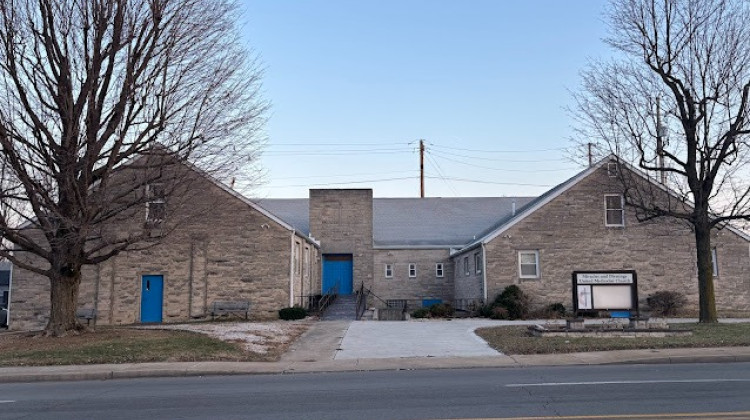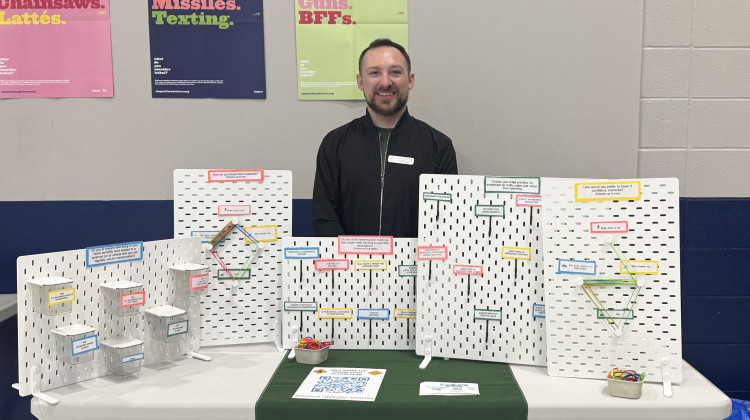
The Girls STEM Institute research team captures images of the 2024 eclipse for NASA. Left to right: Renee Barlow, Priya J., Nadia S., Asha S., Brooke T., Elizabeth Y. and Shae’la C. Front row, center: Dr. Crystal Morton.
Camike Jones / Indianapolis RecorderBy Camike Jones
In between recording TikTok dances and playing board games, an all-girls research team took turns adjusting their telescope and other specialized equipment to capture images of the total eclipse on April 8.
Their images were sent to NASA in real time and may be included in an upcoming IMAX film about the eclipse.
The research team was made up of middle and high school girls who are members of Girls STEM Institute, or GSI. Founded by IUPUI Associate Professor of Mathematics Dr. Crystal Morton, GSI aims to create an inclusive space for girls of color to explore STEM.
GSI was selected to capture the images by Einstein’s Incredible Universe, a media project whose goal is to “catalyze interest in space science and spark scientific curiosity in lifelong learners, especially young women,” according to their official website.
“I really wanted the scholars to participate so they could engage in space science, but also be a part of a historic moment with this total eclipse,” said Morton. “They completely led this research.”
The team of girls began meeting on the weekends in December 2023 to capture images of the sun in advance of the total eclipse. The girls had specific roles including communicating with the DEB Initiative at Kent State University, collecting data, troubleshooting any equipment issues and capturing the best possible images.
“They are experts in their roles and I try to really show them that and things that they don’t know, try to guide them into how they can gain that information, gain that knowledge,” said Na’imah Berhane, the group lead for the research team.
Berhane, who develops curriculum for GSI, wanted to empower the girls to take full ownership of the project. “My role does not involve running the research itself; that is divided amongst the students.”
At first, Nadia S., said she did not want to join the project. She initially preferred to hang out with her friends on the weekend, but her mother helped her understand how unique this experience was, especially for girls who are underrepresented in STEM fields.
“There should be more girls in science, girls in general; not just Black girls [or] white girls, girls in general,” Nadia S. said. “If you’re a girl, you should try to go for these opportunities. You want to [be a] pioneer.”
Asha S., on the other hand, did not need a lot of convincing. “I heard NASA was going to be in it so, of course, I couldn’t turn down the opportunity and I felt like it would be something really, really fun to do.”
Excited be a part of this project and capture this rare event, Brooke T. said, “This solar eclipse was different than the last one because the last one in 2017 was only partial. This is not in every area so we’re lucky to be able to see this.”
Though she has not yet finalized her decision on which STEM career she wants to pursue, 9th grader Elizabeth Y., said she joined the research team because she, “wanted to be exposed to different things so that I’m able to pick what I enjoy the most.”
“Each of the girls on our team was nominated by a staff member that had a chance to work closely with them and thought they would be a really good fit for this type of work,” shared Berhane. Since being a part of this project, Berhane has seen the growth in the girls’ confidence and the development of their public speaking skills.
GSI Director of Family Engagement Renee Barlow said, “For them to be a part of this for several weeks, not just for this day, to understand careers in that field, what those careers look like, it’s adding to their knowledge of different ways you can incorporate STEM as a career.”
Edna Ellis agrees. As a parent she has observed that her daughter’s thinking “is broader and she will take more chances,” since she had this opportunity.
“I just appreciate this,” said Ellis. “I appreciate Girls STEM. She’s been in it for a few years and when it’s time to sign back up, she wants to do it.”
Berhane hopes this project has sparked the girls’ interest in some way that will follow them into their academic careers and beyond. Not every girl may become an astronomer, she said, but they may have learned more about research, teamwork or leadership. “I hope some small part of it just sticks with them.”
While there are still few girls and women in STEM, Morton remains optimistic about the impact of this project.
“I’m hoping that they leave here having more interest in space science, understanding there are different opportunities for them in STEM and that they belong in this space and they bring so much to this space.”
Contact Indianapolis Recorder Editor-in-Chief Camike Jones at 317-762-7850.
 DONATE
DONATE






 Support WFYI. We can't do it without you.
Support WFYI. We can't do it without you.